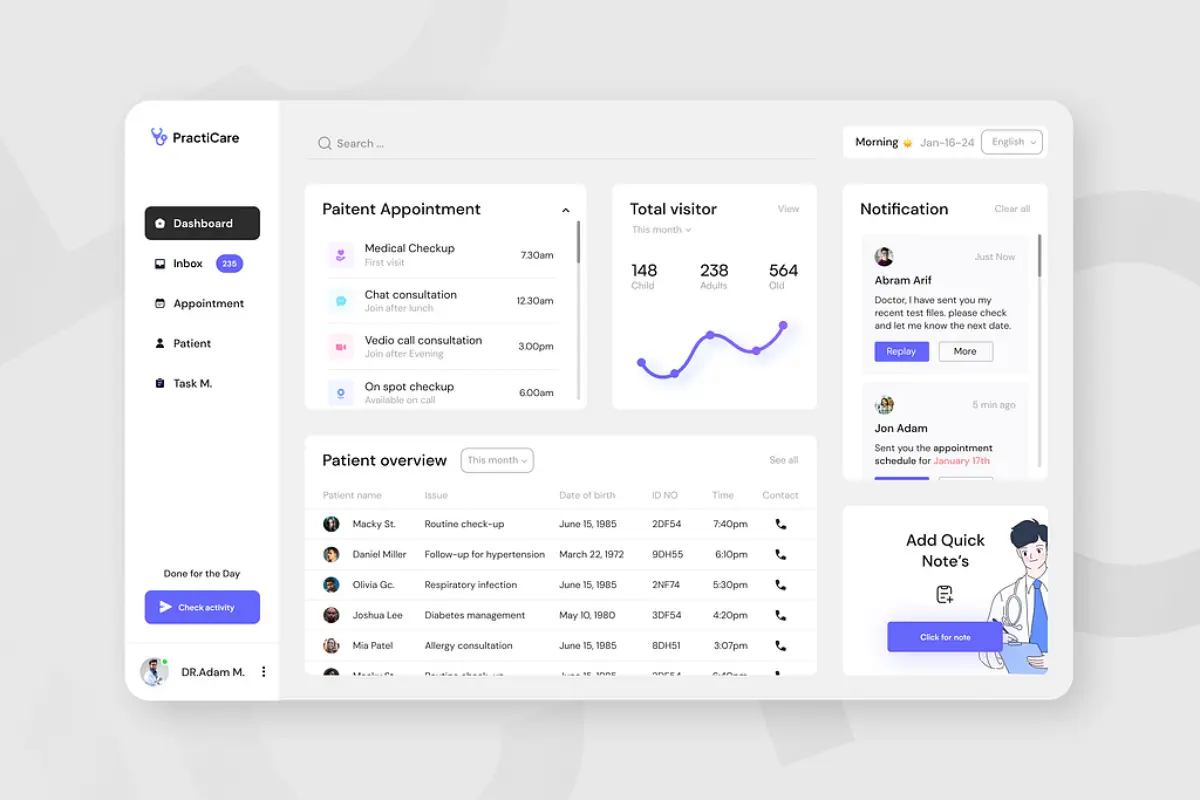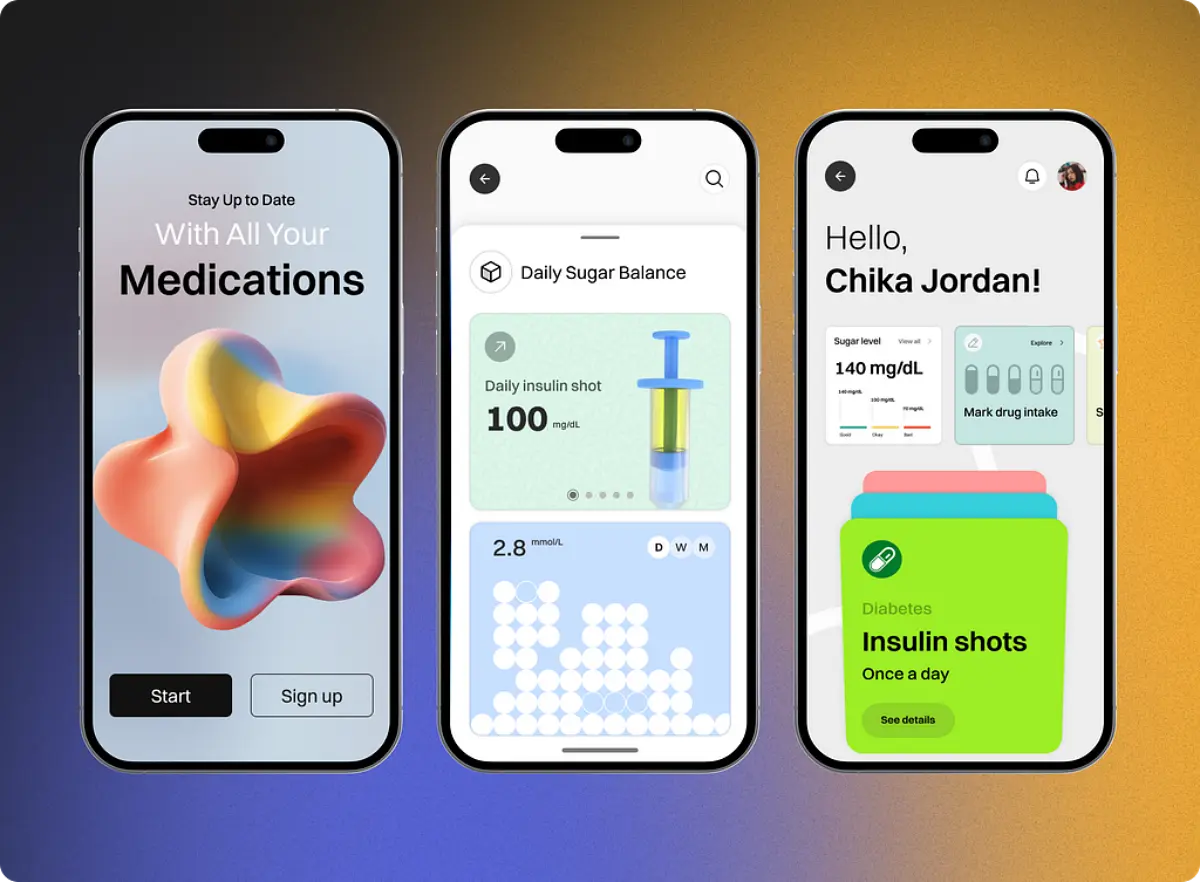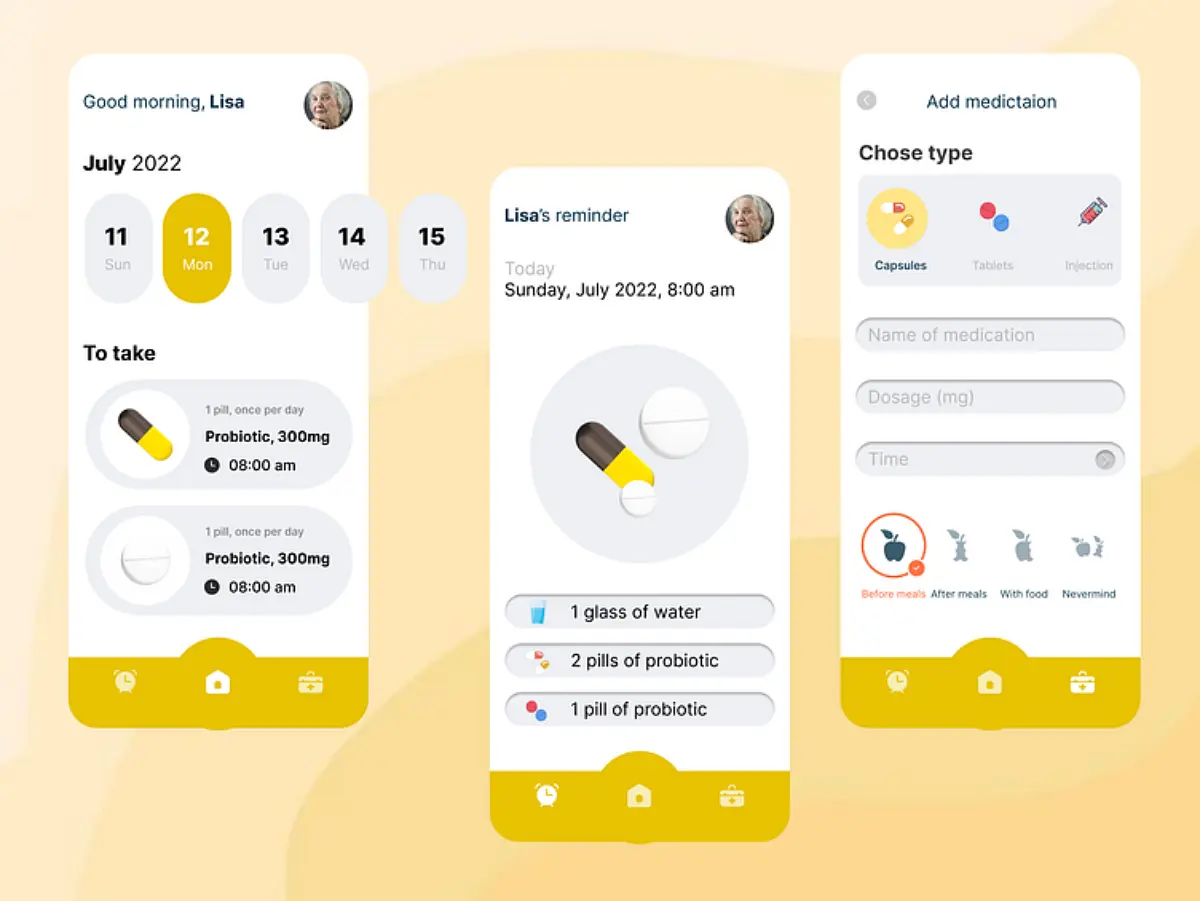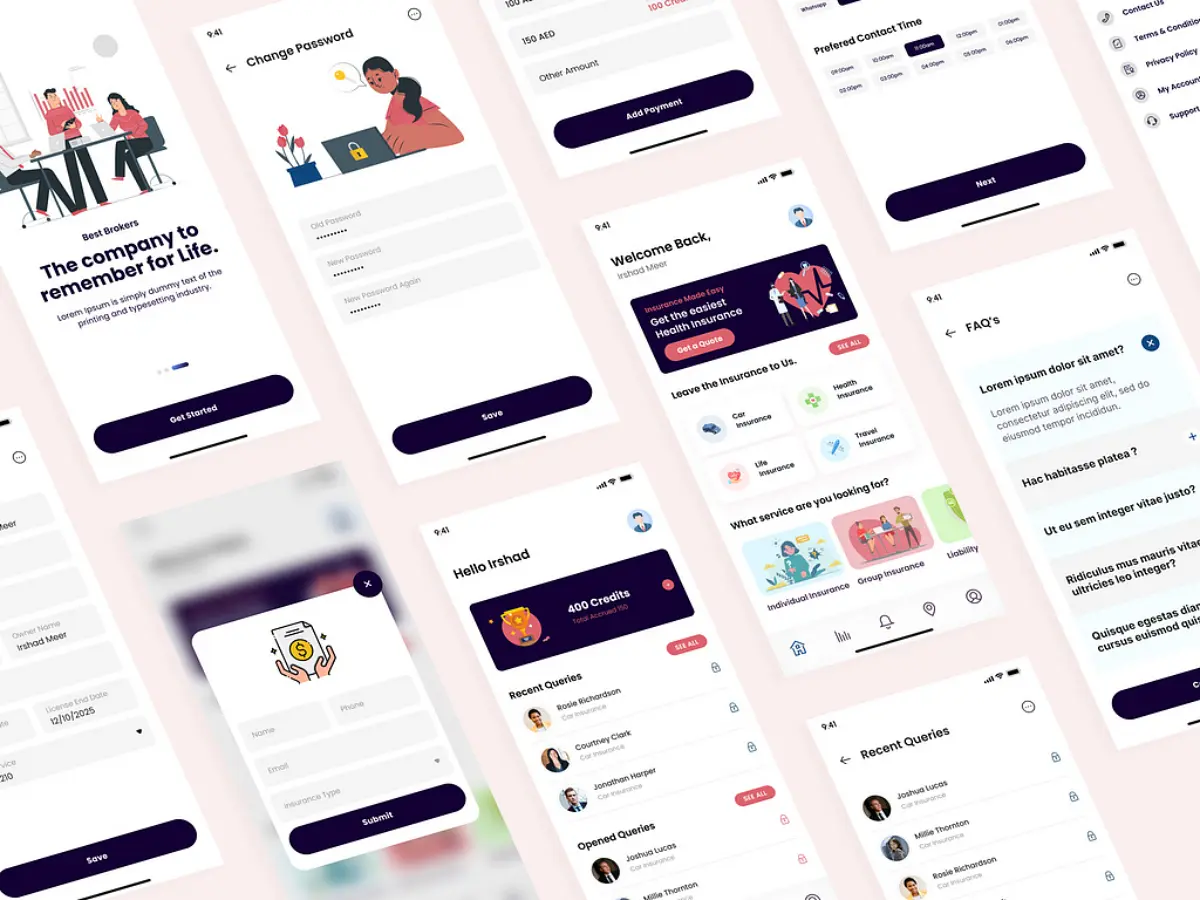Pharmacy Management Software – Guides, Features, Examples
- TECHVIFY Team
- 0 Comments
The healthcare industry is evolving, and pharmacies are now benefiting from better data access and interoperability. This connectivity allows for valuable data collection, leading to improved decision-making and patient care. Pharmacies can now replace manual processes, enhance patient care, grow their business, and stay competitive.
This article explores how pharmacy management software (PMS) helps achieve two main goals: 1) streamlining workflows through automation, and 2) improving patient outcomes and customer experience to stay competitive.
I. Main Benefits of Pharmacy Management Software
Pharmacy management software automates various tasks within a pharmacy. It handles reviewing physician orders, preparing medications, managing inventory, placing drug orders, billing, insurance processing, counseling, and identifying drug incompatibilities. All these tasks are performed while ensuring compliance with legal protocols.
Advanced Features for Competitive Edge
Traditional functions can be automated, but additional features can enhance customer experience and attract more patients. These features offer personalized and engaging services, giving the pharmacy a competitive edge. We will discuss these features in detail in the following section. Let’s look at the primary benefits of a pharmacy management system.

Enhancing Pharmacist Efficiency
Pharmacists spend significant time dispensing drugs, which requires concentration, verification, and checking for drug interactions. Manually dispensing drugs is not necessary. Effective software manages prescriptions easily, allowing pharmacists more time to interact with patients. This leads us to the next benefit.
Improving Patient Health Outcomes
Patients often seek counseling from pharmacists. A pharmacy management system (PMS) can enhance this by allowing pharmacists more time with patients and enabling online communication through a patient portal. By connecting to a hospital’s Electronic Health Record (EHR), pharmacists can access a patient’s medication history for better recommendations. Additionally, medicine adherence tools help patients manage their medications, refill prescriptions, and receive notifications.
Preventing Medicine Fraud
Pharmacies are crucial in managing controlled dangerous substances (CDSs). They enter prescription information into the Prescription Drug Monitoring Program (PDMP) database and check it when dispensing drugs. A PMS integrated with the PDMP portal simplifies this process by automatically adding information to the patient’s history, reducing logging time and effort to a few clicks.
More healthcare-related articles:
10 Best Healthcare Scheduling Software for Better Management
Enhancing Medical Services: The Strategic Guide to Healthcare IT Outsourcing Success
II. Key Features of a Pharmacy Management System
Pharmacists use various computer systems to streamline their work. Here are some common types:
- Web-Based Ordering Systems
These systems, often provided by drug wholesalers, allow pharmacists to order medications directly from the wholesaler’s website. - Perpetual Inventory Systems
Federal law requires these systems for Schedule II controlled substances. These systems continuously record the quantity of medications as prescriptions are filled and dispensed. This ensures that inventory is always up-to-date, with medications automatically removed from stock. - Automatic Dispensing Systems
These machines automatically count and dispense pills for pharmacists. Some advanced systems can even print and apply labels to bottles.
A pharmacy management system (PMS) typically includes the functions of a perpetual inventory system and offers additional features and integrations to manage various other processes.
Inventory Management in Pharmacies
Managing inventory in pharmacies involves extensive paperwork and manual checks. Order forms are manually filled and sent to manufacturers, barcodes are scanned daily for stock updates, and unclaimed prescriptions must be returned to stock. While not all processes can be automated due to regulations and supplier limitations, a Pharmacy Management System (PMS) can handle several routine tasks.
Stock Organization and Counting: A PMS maintains a detailed log of inventory, filtered by storage conditions and expiration dates, reducing errors from incorrect counts.
Medication Ordering: A PMS uses reorder points or par levels to generate automatic orders, calculate required items, and send orders via electronic data interchange (EDI).
Reporting: A PMS generates reports to identify top-performing wholesalers and vendors, providing insights into medication ordering and preparing for high-demand periods like flu season. It also helps calculate par levels automatically.

E-Prescribing
E-prescribing allows doctors to create and send prescriptions electronically to pharmacies using an Electronic Health Record (EHR) or Computerized Provider Order Entry (CPOE) system. Pharmacies confirm receipt, indicate when orders are filled, and notify if medication isn’t picked up. Renewal requests are made with a few clicks.
This process eliminates paperwork, ensures prescriptions aren’t lost or misunderstood, and maintains accurate dosages, reducing human error.
The XML-based SCRIPT standard facilitates communication. Prescription software must be Surescripts-certified, similar to EHR certification. Check the Surescripts database to ensure your Pharmacy Management System (PMS) vendor supports it or to get your system certified.
Compounding
Compounding features are often integrated with inventory management and prescribing in a PMS to ensure accuracy during drug dosing. Scale integration allows the PMS to connect to scales, automatically logging weights and sending alerts if the weight is out of the tolerance range.
Batch support and multi-batch compounding enable the software to create and manage compound batches, organize quantities and details, and combine multiple batches into a single prescription for easier tracking. The automatic compound pricing and billing feature calculates compound item prices based on the ingredients’ average wholesale prices.
Medication Therapy Management
MTM services provided by pharmacists improve patient adherence and enhance customer relationships. Key features of Pharmacy Management Systems (PMS) that support MTM activities include:
-
Collecting Patient Information: Gathers data from various sources, including current medication lists, medical history, EHR test results, and patient-provided information such as lifestyle habits, socioeconomic factors, and health goals.
-
Patient Information Analytics: Uses collected data to generate analytics. Clinical Decision Support (CDS) systems identify issues based on patient goals and suggest effective and safe medications.
-
Developing a Patient Care Plan: Utilizes medication adherence tools like notifications and calendars. Physicians and pharmacists collaborate on the plan and monitor results.
-
Implementing and Evaluating Medication Therapy: Pharmacists and physicians assess medication issues and side effects during therapy, adjusting the care plan as needed.
Point of Sale and Billing Solutions
A modern POS system enhances the patient shopping experience and efficiently manages inventory. Key features include:
- Payment Processing and Returns: Supports credit/debit cards, FSA/HSA cards, Apple Pay, online payments, and fund returns.
- Electronic Signature Capability: Captures HIPAA-compliant signatures in-store and at delivery, verifying them with patient records.
- Real-Time Inventory Management: Updates inventory at checkout.
- Financial Reporting: Generates customized financial reports.
- Loyalty Program Management: Creates and manages rewards programs.
- Sales, Coupons, and Gift Card Management: Generates custom benefits and applies sales rules.
Pharmacy POS systems are modular, allowing feature selection based on budget and needs. This flexibility is crucial in the fragmented pharmacy software market.
Get the Best Consulting Service to Choose Your Best Software
Contact TECHVIFY – Vietnam’s Leading Offshore Software Development & Outsourcing Company, for consultation and development services.
III. 5 Best Pharmacy Management Software to Pick in 2024
1. PrimeRx
PrimeRx is a flagship pharmacy management software developed by Micro Merchant Systems. This software provides extensive features to automate and manage essential pharmacy operations. It is designed in an intuitive, user-friendly format and can be tailored to meet the unique needs of each pharmacy. Pharmacies can also expand their functionality according to their service offerings.
PrimeRx is widely used in thousands of pharmacies throughout the United States. In 2023, it received a notable Stevie Award for “Achievement in Product Innovation” from the American Business Awards.
Features of PrimeRx
- Medication Management ensures accurate and safe dispensing with a comprehensive drug database and verification.
- Operational Efficiency is achieved with document management, reporting, and workflow transparency.
- Medication Administration includes prescription management, inventory control, and system integration.
- Patient Care is enhanced with a patient portal, insurance verification, and point-of-care services.
- Paperless Documentation supports medication reconciliation, PDMP reporting, and audit documentation.
2. McKesson Pharmacy Systems
McKesson Pharmacy Systems (MPS) is a leading provider of innovative pharmacy management software and services designed to enhance pharmacies’ operational efficiency and patient care capabilities. Part of McKesson Corporation, MPS offers a complete set of solutions customized to address the requirements of various pharmacy settings, including retail chains, independent pharmacies, hospital outpatient pharmacies, and long-term care facilities.
Key Features
- Pharmacy Management Software: Streamlines inventory, prescription, and patient management.
- Clinical Programs: Supports medication therapy management and immunization services.
- Compliance and Reporting: Ensures regulatory adherence and facilitates detailed reporting.
- Point-of-Sale (POS) Systems: Integrates for seamless transaction processing.
- Automated Solutions: Includes robotics and automated dispensing for increased accuracy.
- Workflow Optimization: Customizable workflows and task automation.
- Patient Engagement: Tools to improve patient communication and adherence.
3. WinPharm Pharmacy Software
WinPharm is a comprehensive pharmacy management software solution designed to streamline and optimize the operations of independent and small-chain pharmacies. Developed by Computer-Rx, WinPharm integrates advanced technology with user-friendly features to enhance the efficiency of pharmacy workflows, improve patient care, and support business growth.
Key Features
- Prescription Processing: Efficiently manage prescription entries, refills, and transfers with streamlined workflows.
- Inventory Management: Monitor and control inventory levels instantaneously, ensuring optimal stock levels and reducing waste.
- Patient Management: Maintain detailed patient profiles, including medication history, allergies, and preferences, to provide personalized care.
- Clinical Services: Supports medication therapy management (MTM), immunizations, and other clinical services to enhance patient outcomes.

4. PioneerRx Pharmacy Software
PioneerRx is a leading pharmacy management software designed to support the daily operations of independent pharmacies. Renowned for its powerful capabilities and intuitive design, PioneerRx aims to enhance patient care efficiency, accuracy, and quality. Emphasizing innovation and ongoing enhancement,, PioneerRx is committed to empowering pharmacists to deliver better healthcare outcomes.
Features of PioneerRx
- Reporting and Analytics: Delivers comprehensive reporting and analytics tools to monitor performance, compliance, and business trends.
- Point-of-Sale (POS) Integration: Seamlessly integrates with POS systems for efficient transaction processing and enhanced customer service.
- E-Prescribing: Facilitates electronic prescribing to improve accuracy and efficiency.
- Compliance Tools: Ensures adherence to federal and state regulations, including HIPAA and DEA requirements.
- Workflow Optimization: Customizable workflows and task automation to enhance operational efficiency.
- Patient Engagement: Tools and services designed to improve patient communication, adherence, and satisfaction.
5. Cerner Retail Pharmacy
Cerner Retail Pharmacy is part of Cerner’s comprehensive suite of healthcare solutions, renowned for its robust electronic health record (EHR) systems. Cerner’s pharmacy solution is designed to enhance connectivity and data flow across various pharmacy processes, ensuring seamless interoperability within the healthcare ecosystem. Leveraging SMART on FHIR data elements, Cerner Retail Pharmacy simplifies health information integration and exchange.
Key Features
- Multi-Location Hosting: Centralized hosting for consistent data management across multiple locations.
- Workflow Automation: Streamlines routine tasks to enhance efficiency.
- Point of Sale (POS): Integrated system for comprehensive transaction management.
- Medical Adherence Service: Tools to improve medication adherence with automated reminders and tracking.
- Third-Party Integration: Extensive interfaces for seamless connection with other healthcare systems and providers.
Learn more on:
IV. Should You Develop Custom Pharmacy Management Software
Some excellent providers on the market understand the industry’s intricacies and can offer significant value. However, there are several considerations to keep in mind when purchasing a PMS:
- Vendor Lock-In: This can lead to integration challenges and restrict the ability to adopt tools outside the vendor’s ecosystem.
- Outdated Design and UX: Older systems can burden pharmacists more due to their clunky interfaces.
- Customization Needs: Enterprise tools often require substantial customization.
Pharmacy management software generally can’t be used straight out of the box—it usually requires considerable tweaking and customization before it’s ready for use. This makes the transition a complex digital transformation task. In many cases, fully custom development might be a better option. Here are some scenarios where custom development could be advantageous:
-
No Previous PMS: If you’ve never used a PMS before and have managed your operations with notebooks and spreadsheets, organizing and migrating this data to a new system can be lengthy and challenging, particularly with limited IT support. An independent software developer can ensure a smooth data transition.
-
Specific Requirements: Custom UX designs to enhance pharmacist efficiency or integration with existing software are more achievable with a custom-built solution rather than adapting off-the-shelf products.
-
Innovation: If you’re looking to innovate, some advanced ideas, such as implementing IoT sensors, AI-based analytics, or robotic process automation, are more feasible with custom development, allowing for greater flexibility and tailored solutions.
Conclusion
Pharmacy management software (PMS) is essential for automating tasks, enhancing pharmacist efficiency, and improving patient outcomes. While pre-built solutions often require extensive customization, a custom-developed PMS can better meet your specific needs and support innovative features.
Contact TECHVIFY now and revolutionize your pharmacy with a custom-tailored management system!
TECHVIFY – Global AI & Software Solution Company
For MVPs and Market Leaders: TECHVIFY prioritizes results, not just deliverables. Reduce time to market & see ROI early with high-performing Teams & Software Solutions.
- Email: [email protected]
- Phone: (+84)24.77762.666





